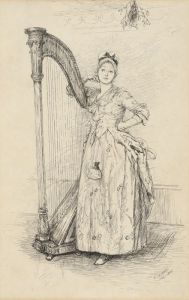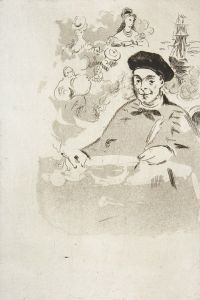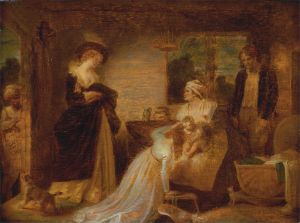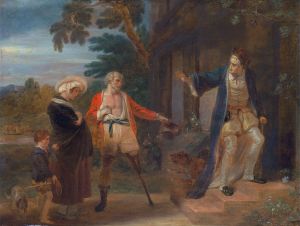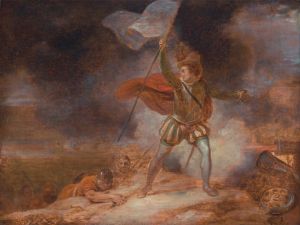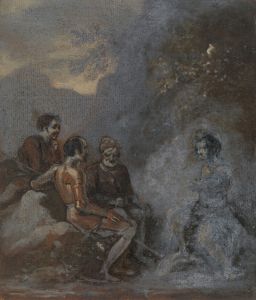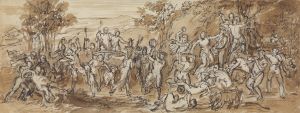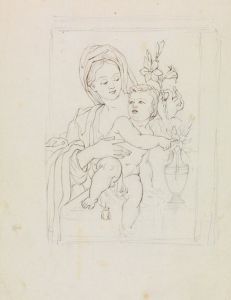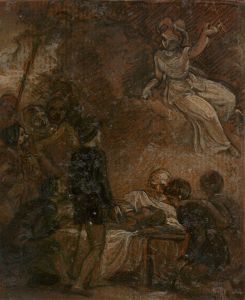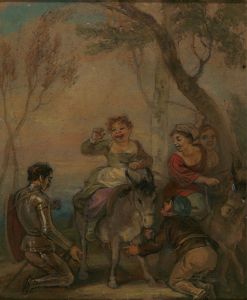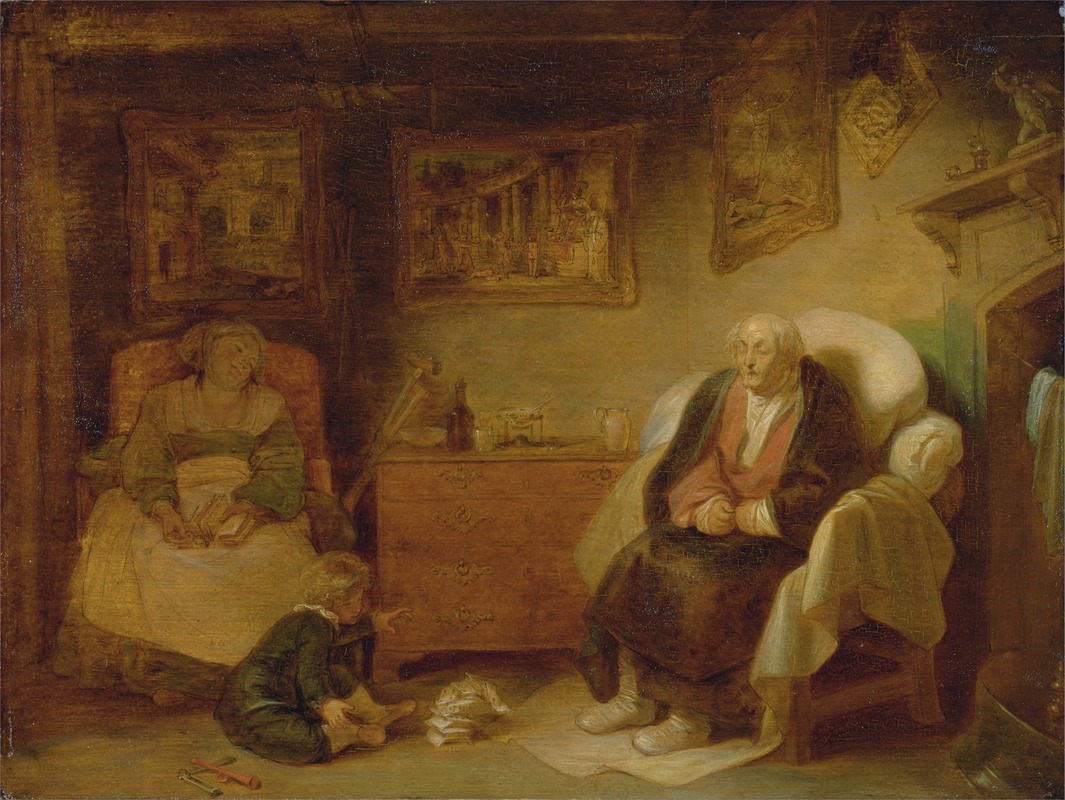
The Seven Ages of Man- Second Childishness, ‘As You Like It,’ II, vii
A hand-painted replica of Robert Smirke’s masterpiece The Seven Ages of Man- Second Childishness, ‘As You Like It,’ II, vii, meticulously crafted by professional artists to capture the true essence of the original. Each piece is created with museum-quality canvas and rare mineral pigments, carefully painted by experienced artists with delicate brushstrokes and rich, layered colors to perfectly recreate the texture of the original artwork. Unlike machine-printed reproductions, this hand-painted version brings the painting to life, infused with the artist’s emotions and skill in every stroke. Whether for personal collection or home decoration, it instantly elevates the artistic atmosphere of any space.
Robert Smirke's painting The Seven Ages of Man - Second Childishness is an artistic interpretation of a segment from William Shakespeare's play As You Like It. The artwork is part of a series inspired by the famous monologue delivered by the character Jaques in Act II, Scene VII, often referred to as the "Seven Ages of Man" speech. In this monologue, Shakespeare describes the seven stages of human life, from infancy to old age, with the final stage being "second childishness and mere oblivion."
Robert Smirke (1753–1845) was a British painter and illustrator known for his works that often depicted scenes from literature and history. He was a member of the Royal Academy and gained recognition for his ability to translate literary themes into visual art. Smirke's series on the "Seven Ages of Man" reflects his interest in Shakespearean subjects, which were popular among artists and audiences during the 18th and 19th centuries.
The painting Second Childishness specifically focuses on the final stage of life as described by Shakespeare: "Last scene of all, / That ends this strange eventful history, / Is second childishness and mere oblivion, / Sans teeth, sans eyes, sans taste, sans everything." This stage symbolizes the return to a state of dependency and frailty, akin to infancy, but with the added loss of memory and faculties. Smirke's depiction captures the vulnerability and solemnity of this phase, emphasizing the cyclical nature of human existence.
The painting is characterized by Smirke's detailed and narrative-driven style, which was influenced by his background as an illustrator. His works often featured careful attention to costume, setting, and expression, aiming to convey the emotional and thematic essence of the literary source material. While specific details about the composition of Second Childishness are not widely documented, it is consistent with Smirke's broader approach to the "Seven Ages of Man" series, which sought to visually interpret each stage of life as described by Shakespeare.
The exact date of the painting's creation is not clearly recorded, but it aligns with Smirke's active period as an artist in the late 18th and early 19th centuries. The painting is part of a larger body of work that reflects the cultural fascination with Shakespeare during this era, as well as the broader Romantic interest in themes of mortality, the passage of time, and the human condition.
The Seven Ages of Man - Second Childishness is an example of how visual art can engage with and reinterpret literary texts, offering viewers a new perspective on familiar themes. The painting, along with the rest of Smirke's series, serves as a testament to the enduring influence of Shakespeare's works on the visual arts. Further details about the painting's current location or ownership are not readily available.





